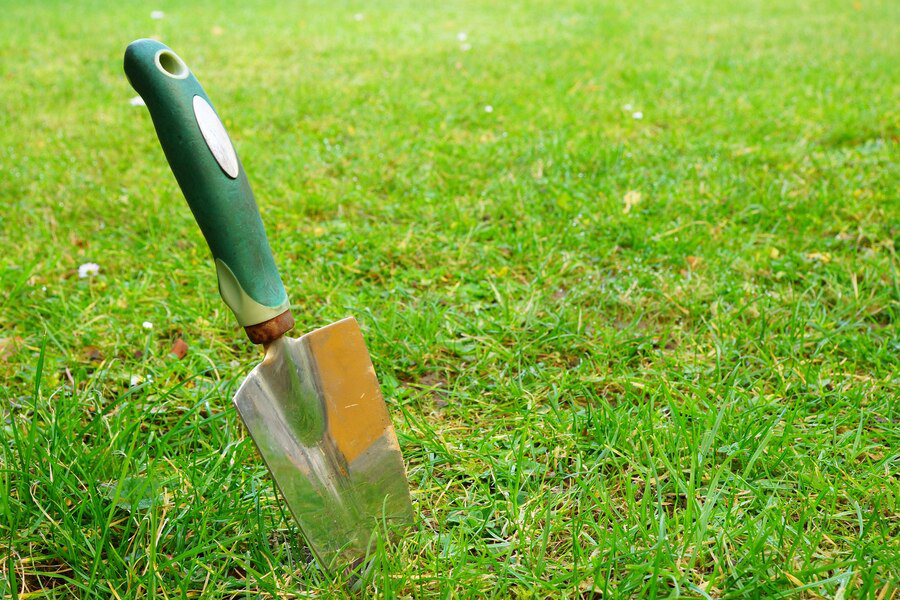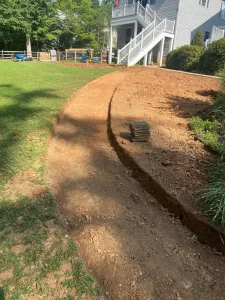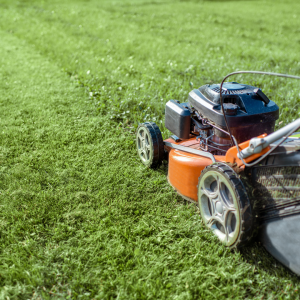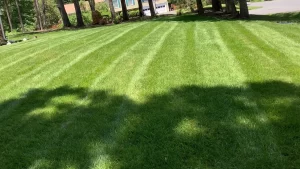Enter the realm where lush green lawns thrive, where the quest for vibrant, healthy grass transcends mere aspiration and becomes an achievable reality through the enigmatic process of aeration. Ever pondered the lack of vibrancy in your yard, only to find the answer buried beneath the surface? Aeration, often overshadowed yet indispensable for a flourishing lawn, emerges as the pivotal element in unlocking the full potential of your outdoor sanctuary. Join us on an illuminating journey through the intricacies of aeration, a horticultural marvel capable of metamorphosing lackluster lawns into verdant marvels. It’s not just a generic fix; rather, it’s a scientifically-proven strategy meticulously designed to invigorate your soil, fostering robust grass growth and overall turf vitality. We’ll delve deep into the essence of aeration, unraveling its scientific underpinnings, elucidating the when and how of its execution, and dispelling prevalent misconceptions that may have hindered your lawn care endeavors. Whether you boast seasoned expertise or are just beginning to explore the world of greenery, this comprehensive guide will furnish you with the indispensable knowledge and tools necessary to cultivate your outdoor oasis. Brace yourself to unearth the hidden secrets lying beneath your lawn’s facade as we demystify aeration – the gateway to realizing the lush green expanse you’ve always envisioned.
Understanding Aeration
Understanding aeration is fundamental to nurturing a vibrant and healthy lawn. Aeration refers to the process of perforating the soil to alleviate compaction and facilitate better air, water, and nutrient penetration to the grassroots. The science behind aeration is rooted in addressing the common issue of soil compaction, which occurs due to factors such as foot traffic, heavy machinery, and natural settling over time. Soil compaction restricts the movement of air, water, and nutrients within the soil, hindering the development of robust root systems. Aeration, therefore, becomes a crucial practice as it introduces channels or holes into the soil, creating a pathway for essential elements to reach the grassroots.

The improved soil structure resulting from aeration promotes a healthier microbial environment, fostering the decomposition of organic matter and nutrient cycling. This process is particularly vital in regions with clayey or compacted soils, where water drainage is often a challenge. By breaking up compacted soil, aeration prevents surface runoff and waterlogging, ensuring that roots receive the necessary oxygen and nutrients for optimal growth. Understanding the science behind aeration involves recognizing its role in creating an environment conducive to the overall well-being of the lawn. As a proactive measure, lawn owners can identify signs of soil compaction, such as pooling water, poor grass growth, or increased thatch accumulation, and implement aeration at strategic times to rejuvenate their lawns.
The Science Behind Aeration
Aeration, often overlooked but profoundly impactful, lies at the heart of numerous natural processes, from sustaining aquatic life in ponds to enhancing the flavor of fine wines. But what exactly is the science behind aeration? Join us as we delve into the fascinating world of aeration, exploring its principles, applications, and profound effects on our environment and daily lives.
- Improved Aeration: As the name suggests, aeration enhances the exchange of gasses between the soil and the atmosphere. This allows oxygen to penetrate the soil, facilitating aerobic microbial activity crucial for nutrient cycling and the breakdown of organic matter.
- Enhanced Water Infiltration: Aeration promotes better water penetration into the soil. The channels created act as conduits for water to reach deeper layers, preventing surface runoff and reducing the risk of waterlogged conditions.
- Root Development: By alleviating compaction, aeration encourages the development of a robust root system. Healthy root growth is essential for nutrient absorption, disease resistance, and overall plant vitality.
- Thatch Decomposition: Aeration aids in breaking down thatch, the layer of dead grass and organic debris that accumulates on the soil surface. This helps prevent thatch buildup, which can impede water and nutrient movement.
Understanding the science behind aeration empowers lawn caretakers to make informed decisions about when and how to implement this practice. It is a proactive measure that addresses the underlying soil conditions, fostering an optimal environment for lush green lawns.
Tools And Equipment
When it comes to aerating your lawn, choosing the right tools and equipment is crucial for achieving optimal results. Here’s a breakdown of the tools and equipment commonly used for lawn aeration:
- Aeration Machines:Core Aerator: This machine extracts small plugs or cores of soil from the lawn, creating channels for air and nutrients. Available in walk-behind and tow-behind models for varying lawn sizes.Spike Aerator: Features spikes or tines that puncture the soil. While less effective than core aeration, spike aerators are suitable for smaller lawns and can be more budget-friendly.
- Hand Tools:Aeration Shoes: Strap-on shoes with spikes that you wear while walking across the lawn. Suitable for small areas but less effective than powered machines.Manual Core Aerator: Handheld tool with hollow tines to manually extract soil cores. Ideal for spot treatments or small lawns.

- Soil Test Kit:Determine the pH and nutrient levels in your soil before aeration to tailor your lawn care regimen more effectively.
- Lawn Roller:After aeration, rolling the lawn helps to level the surface and ensures good seed-to-soil contact if overseeding is planned.
- Broadcast Spreader:Used for even distribution of seed or fertilizer after aeration, promoting uniform growth.
Before choosing tools, assess the size and condition of your lawn. Larger lawns may benefit from powered machines, while smaller areas might be efficiently managed with manual tools. Remember to follow proper aeration techniques and guidelines to ensure a successful and healthy lawn rejuvenation.
Step-by-Step Aeration Process
The step-by-step aeration process is crucial for achieving the desired results in promoting a healthy and lush green lawn. Here’s a comprehensive guide:
- Assess Your Lawn:Before beginning the aeration process, assess the condition of your lawn. Look for signs of compaction, such as water runoff, thinning grass, or areas with poor growth. Timing is also essential; aeration is typically performed during the growing season for your type of grass.
- Water the Lawn:Water the lawn thoroughly a day or two before aeration. Moist soil facilitates the aeration process by allowing the aerator to penetrate the ground more effectively.
- Mark Irrigation and Utility Lines:Identify and mark the location of any underground irrigation lines, utility cables, or other potential obstacles in your lawn. This prevents accidental damage during aeration.
- Choose the Right Aeration Equipment:Select the appropriate aeration equipment based on your lawn’s size and the extent of compaction. Two common methods are core aeration (using a machine that removes plugs of soil) and spike aeration (poking holes into the soil).
- Aerate in Multiple Passes:When using a core aerator, make multiple passes over the lawn in different directions. This ensures thorough coverage and aeration of the entire lawn area.
By following this step-by-step aeration process, you’ll provide your lawn with the best conditions for optimal growth and overall health.
Maintaining A Healthy Lawn Post-Aeration
Maintaining a healthy lawn post-aeration is crucial to ensuring that the benefits of the aeration process are sustained over time. Here’s a guide to help you keep your lawn vibrant and lush after aeration:
- Watering:After aeration, it’s essential to maintain a consistent watering schedule. Water deeply and less frequently to encourage deep root growth. Avoid frequent shallow watering, as it can lead to shallow root systems.
- Fertilization:Apply a high-quality fertilizer after aeration to provide essential nutrients to the grass. Choose a fertilizer with a balanced ratio of nitrogen, phosphorus, and potassium. This will support root development and overall grass health.
- Overseeding:Consider overseeding your lawn after aeration, especially if there are bare patches or thin areas. Overseeding helps fill in gaps and promotes a denser, healthier turf.
- Mowing Practices:Adjust your mowing practices post-aeration. Keep the grass at an optimal height to promote root development and shade out weeds. Avoid cutting more than one-third of the grass height in a single mowing session.
- Thatch Management:Monitor thatch levels and address any thatch accumulation promptly. Regular aeration helps prevent thatch buildup, but keeping an eye on it and dethatching if necessary will contribute to a healthier lawn.
By incorporating these post-aeration maintenance practices into your lawn care routine, you’ll maximize the benefits of aeration and enjoy a consistently lush and green lawn.
Demystifying aeration unlocks the secret to achieving your dream of a lush green lawn. Understanding aeration’s science and maintaining your lawn post-aeration are crucial for its sustained health. Precision Lawn and Landscape, at 8193a Euclid Ct, Manassas Park, VA 20111, is poised to help. Beyond aeration, we offer tailored lawn care solutions. For expert advice, services, or to schedule aeration, call 703-244-64078. Let’s transform your lawn into a verdant oasis together. Your dream landscape is within reach, and Precision Lawn and Landscape is here to make it a reality. Let’s grow it together!




